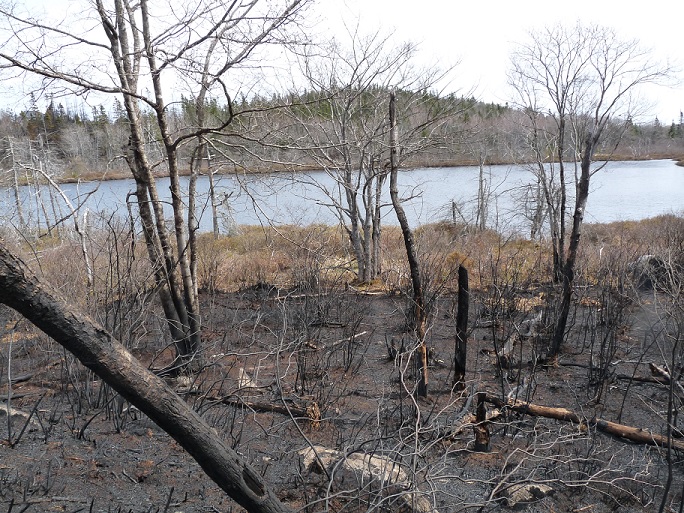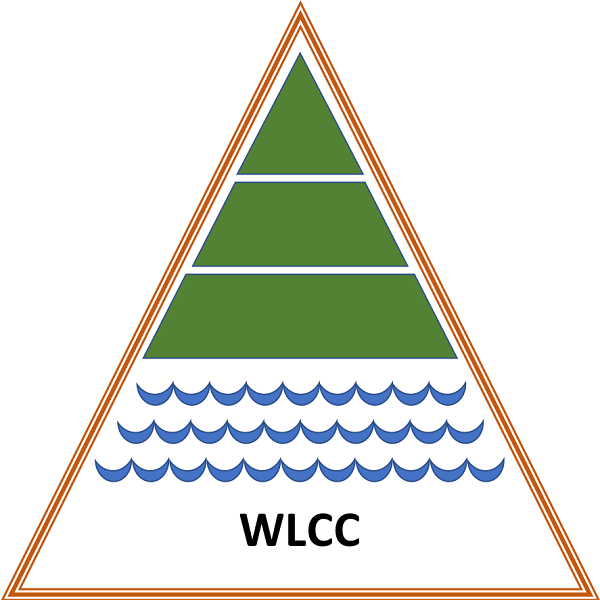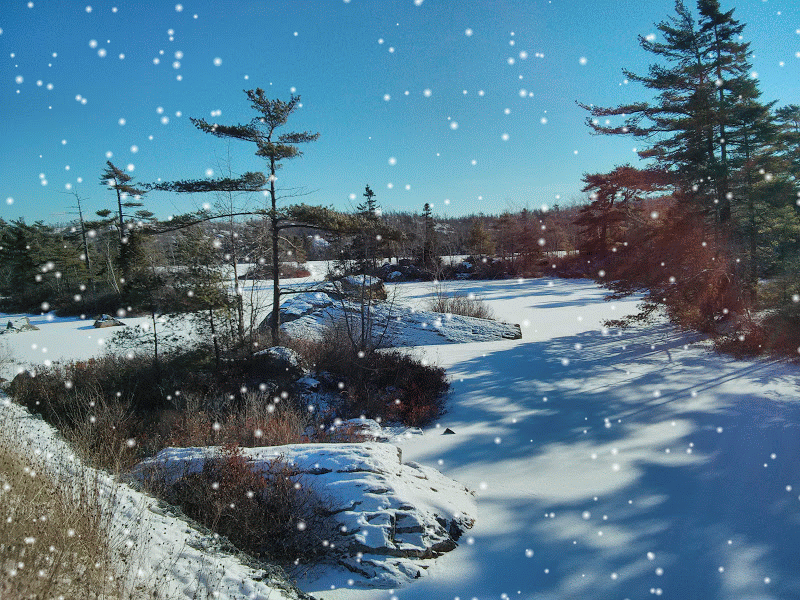Wetlands – natural defence against wildfires
by: Cathy Vaughan
[Reprinted with permission from Chebucto News, October 2023]
Wildfires have slammed our local communities recently and heightened our awareness of the results of human activity on climate change. Besides the practical tasks, such as emergency evacuation preparedness, we are now looking to the science of wetlands as a valuable and available natural defence against wildfires.

Wildfire in Spryfield stopped at wetlands surrounding Lower Mud Pond in the Backlands, 2009 [photo: David Patriquin]
The Spryfield area is surrounded by an abundance of marshes, swamps, rivers and lakes which contain a valuable fire suppressant – water. These moisture-laden wetlands help prevent fires and can act as natural barriers to the spread of forest fires. Wet soggy soil doesn’t burn so well. The volume of water in our local lakes, rivers and ponds also create a wet obstacle which a forest fire can’t necessarily cross.
“There are a lot of allies in nature,” according to Mimi O’Handley, Wetlands and Water Coordinator with Ecology Action Centre in Halifax. “When wetlands are healthy, they are natural sponges and soak up a huge amount of water. A wetland can act as a natural fire break and reduce the intensity of a wildfire.”
Two destructive fires in the Spryfield area in 2009 and 2012 forced the evacuation of hundreds of folks between Herring Cove Road and Purcell’s Cove Road. The extensive wetlands in the Purcells Cove Backlands coupled with the positions of Williams Lake and Colpitt Lake, helped stop the fires at their shorelines. Helicopter water-bombers used water from Williams Lake to help douse the wildfires in the forests in the Backlands.
Besides helping to prevent or slow down the spread of fires, wetlands in the Spryfield Backlands also produce other valuable natural services. Research from Ducks Unlimited Canada shows that “wetlands can reduce the severity of flooding and drought, holding excess water during wet periods and slowing releasing it during dry periods. They also store carbon and provide essential habitat for migratory and threatened species.” These wetlands also supply the McIntosh Run, Williams Lake and Colpitt Lake with volumes of water which support the watershed’s important ecosystems and recreational value.
The Nova Scotia Wetland Conservation Policy aims to protect and guide management of wetlands from the impact of development. “Wetlands of Special Significance” is a status assigned to wetlands on protected lands; wetlands that are habitats for endangered or ‘at risk’ species; salt marshes, and wetlands located in areas that are protected for our drinking water. These special wetlands are automatically protected under this conservation policy.
The province maintains a map-inventory of wetlands throughout Nova Scotia but some wetlands, especially small sites, are not included. The conservation policy cautions that the inventory can be used as a guide but should not replace actual on-site field work to identify all wetlands when planning a development project.
Dr. Patricia Manuel, a retired Dalhousie professor from the Faculty of Architecture and Planning, has taught environmental planning for climate change adaptation and continues to conduct applied research projects on watersheds, wetlands, marine coasts and climate change adaptation planning. Manuel and her students use the Williams Lake watershed and the wetlands in the Purcells Cove Backlands as their natural laboratories and research sites. They have documented many small wetlands that, Dr. Manuel says, ” …. could be easily missed in provincial inventories or by developers in their site assessments.”
A report, co-authored by Dalhousie’s Dr. David Patriquin, biologist and member of the board of directors of Williams Lake Conservation Company, suggests “… that conserving the Williams Lake Backlands and the larger Purcells Cove Backlands as natural systems reduces fire risk to adjacent communities compared to allowing more intrusions into the Backlands.” Patriquin recently participated in a webinar on “Wetlands, Adaptation and Extreme Weather Events” hosted by the Ecology Action Centre and Nature Nova Scotia. Like Dr. Manuel, he is also concerned that many of the wetlands in the Backlands do not meet the criteria stated in the 2011 Nova Scotia Wetland Conservation Policy and won’t be protected from urban development in the Spryfield area.
HRM council has recently requested staff to prepare a wildfire risk and strategy report on the “wildfire risk on wild land-urban interface with preparedness strategies.” Staff will identify a list of local communities that border wild land areas which in the event of a wildfire would require additional emergency evacuation routes and dry hydrants. Dry hydrants are non-pressurized pipe systems that are permanently installed in a lake, stream or pond that can supply water for dousing a fire in an inaccessible wildland area, like the Williams Lake watershed and Backlands.
Fighting wildfires is pricy. Protecting our wetlands is priceless.

